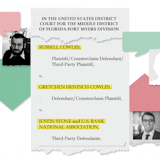A 2015 study by the nonpartisan and highly respected Center for Fiscal Excellence reached a conclusion that today is coming home to roost. Its evaluation of Minnesota taxes found that it would be difficult to get more money from the state's wealthy through hiking the income tax. Instead, "any substantial new spending intended to reduce income inequality will almost certainly need to be supported by new revenue streams from other, more regressive forms of taxation."
In other words, if Minnesota's lower-income residents need better schools, health care and other support systems to raise their economic prospects, it is their tax burden that disproportionately will pay for the improvements.
That forecast has proved true in Gov. Tim Walz's budget proposal. In order to pay for his ambitious spending plans, taxes on the bottom half of Minnesota's earners will increase 9.9%; the top half of earners will see a 5.9% hike. The data are from Walz's own Department of Revenue.
The finding has produced the predictable reactions from Republicans and Democrats. The former say Minnesotans are taxed too much, the latter argue that Minnesotans want to invest more in the priorities residents value.
The debate reflects the same line-in-the-sand arguments over taxes and spending that have defined Minnesota partisan policy debates for years. Arguing over whether the state taxes too much or spends too little ignore the most fundamental question: Is the state achieving the outcomes needed to prosper in a global economy that continues to grow more competitive?
Minnesota enjoys a high standard of living. According to the Census Bureau's American Community Survey, Minnesota has the nation's 12th-highest median household income, more than $9,000 higher than Wisconsin and 60% higher than last-place West Virginia.
But it hasn't always been that way. In fact, it wasn't until the 1970s that Minnesota became a wealthier-than-average state. Bipartisan political leadership, innovation from business and civic leaders and support from a robust nonprofit sector drove the kind of policies that created the economic and social vitality Minnesotans enjoy today.
Importantly, increasing the wealth of Minnesotans didn't come only from investments that were framed only by how much government should tax or spend. Between his time as chief of staff to Gov. Harold LeVander and his election to the U.S. Senate, Dave Durenberger was a citizen advocate for parks, trails and other green spaces. His leadership was key in creating the regional park system in the Twin Cities metro area, for example.



